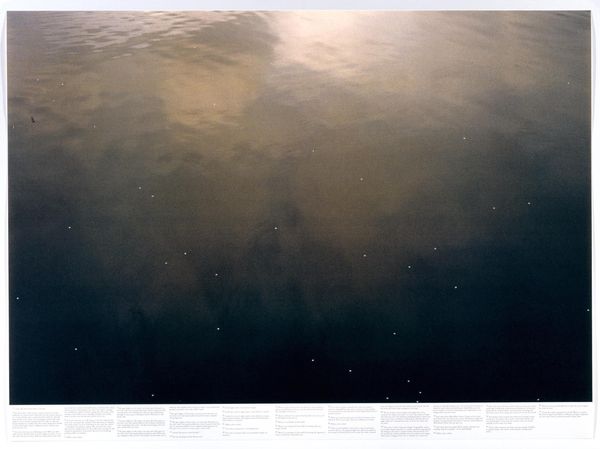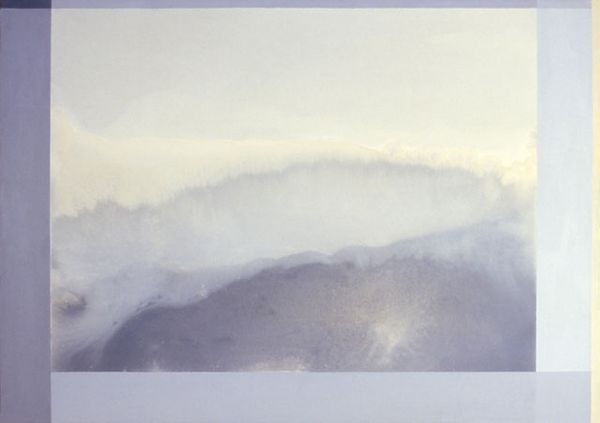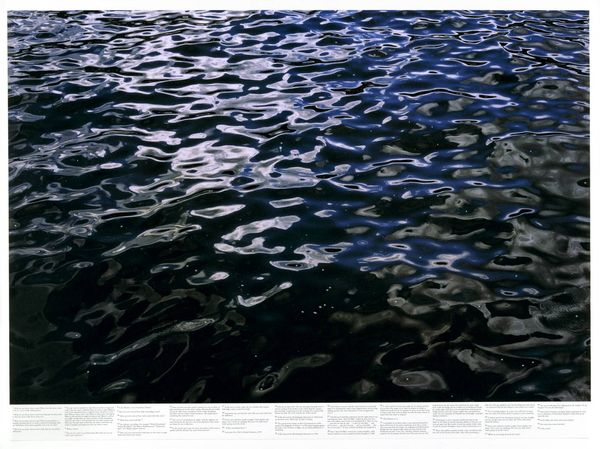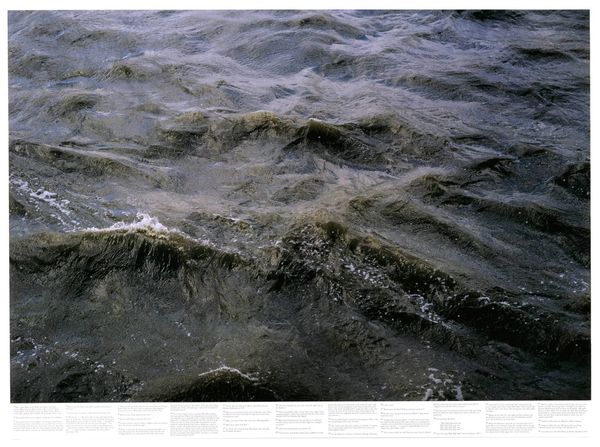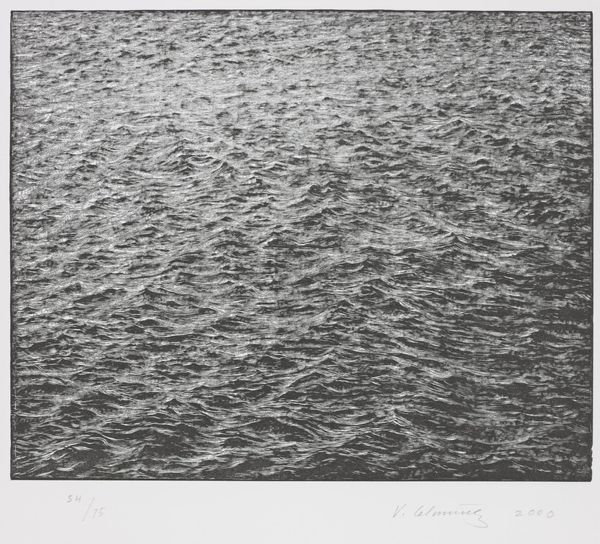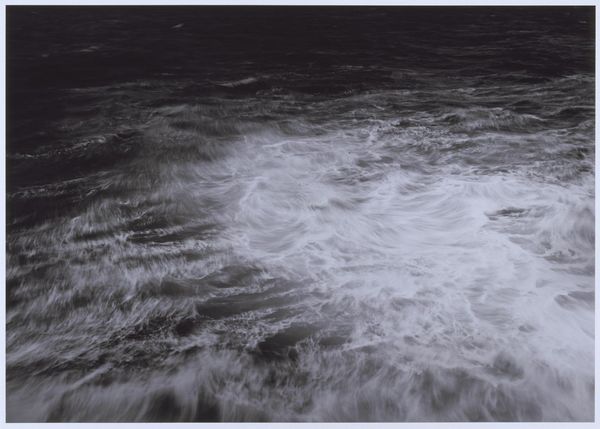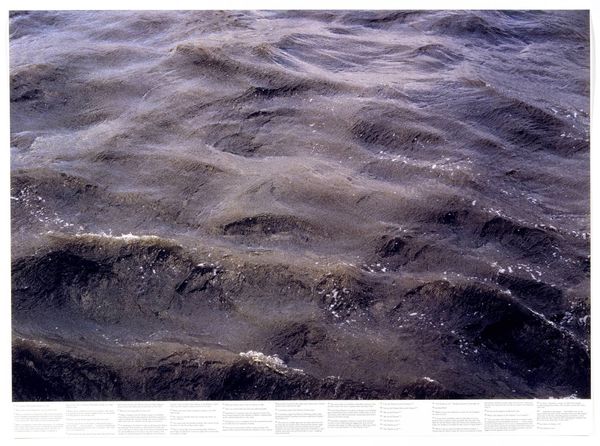
Untitled (from the series Still Water (The River Thames, for Example)) 1999
0:00
0:00
Copyright: Roni Horn,Fair Use
Curator: Before us we have a photograph from Roni Horn’s series "Still Water (The River Thames, for Example)," created in 1999. Editor: Mmm, it's moody, isn’t it? Like looking into the soul of the river. A sort of liquid mirror reflecting a very gray mood. Curator: Horn’s approach involved photographing the River Thames over an extended period. But these aren't simply landscape images. Consider the wider context of water as a site of contested meanings. We must examine how rivers feature historically and contemporaneously as boundaries, as connectors, as life sources often threatened. Editor: Contested meanings... Right! You know, I see it more as an exercise in patience, standing by the water's edge. Wondering how many lives it's seen and maybe, even washed away? I almost feel that little sprinkling of dots could be tears on a canvas. Curator: That visual of tears is poignant. Let’s delve into her methodology. Horn carefully pairs the images with textual footnotes along the frame’s lower register, a technique encouraging us to consider not only the seen but also the suggested narratives and underlying historical weight. Editor: Text… Hmmm, I did not immediately read those at the bottom, was too consumed by the feeling of the water’s depth! Almost overlooked. Those textual snippets certainly shift my initial viewing though; there is a certain irony between the expansiveness I perceive here, and their specific, contextual reference. Curator: Indeed, Horn makes a profound intervention within discourses of representation by refusing straightforward depiction. Through photography she underscores ideas about identity, landscape, and mutability, opening critical dialogue surrounding notions of permanence versus transience, self versus other. Editor: Transient is the word that keeps resurfacing in my thoughts. It’s about change and acceptance that things can be how they are – but only for a brief moment. Looking back at it, it reminds me that everything flows away. Always! Curator: A fitting observation with which to conclude. Considering both Horn’s engagement with conceptual photography and the Thames’ place within complex systems of power, memory, and cultural representation, the work pushes boundaries of visual experience and intellectual enquiry. Editor: I couldn’t have put it better myself. Perhaps this grey mirror reflects us, fleeting and all, back to ourselves?
Comments
No comments
Be the first to comment and join the conversation on the ultimate creative platform.
